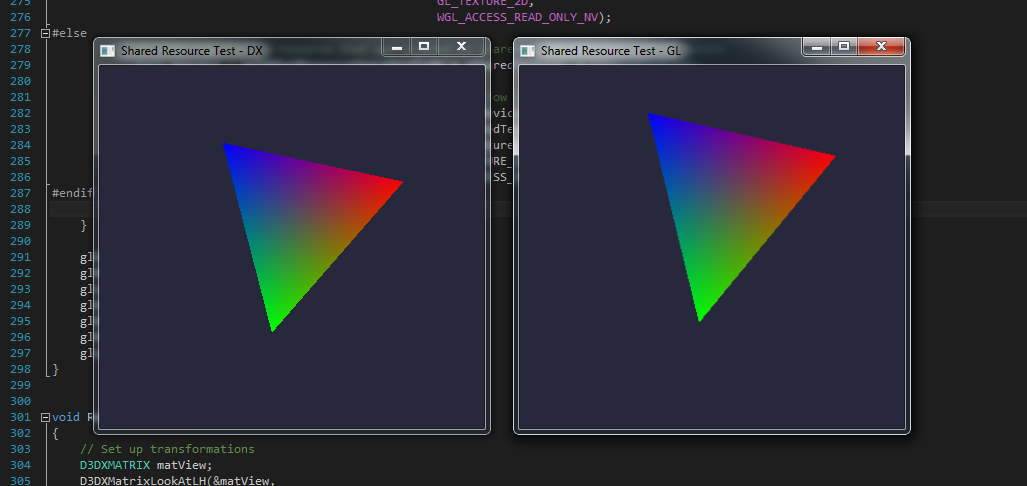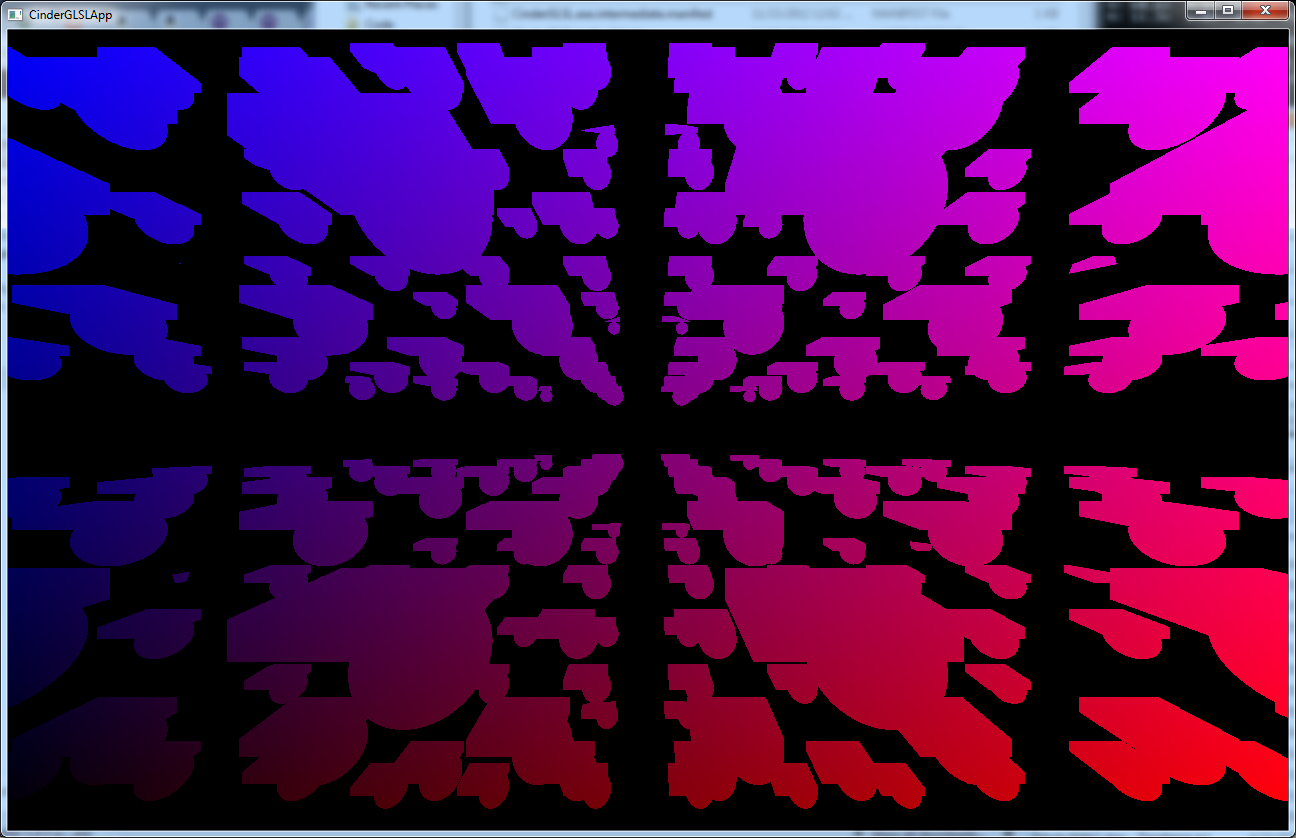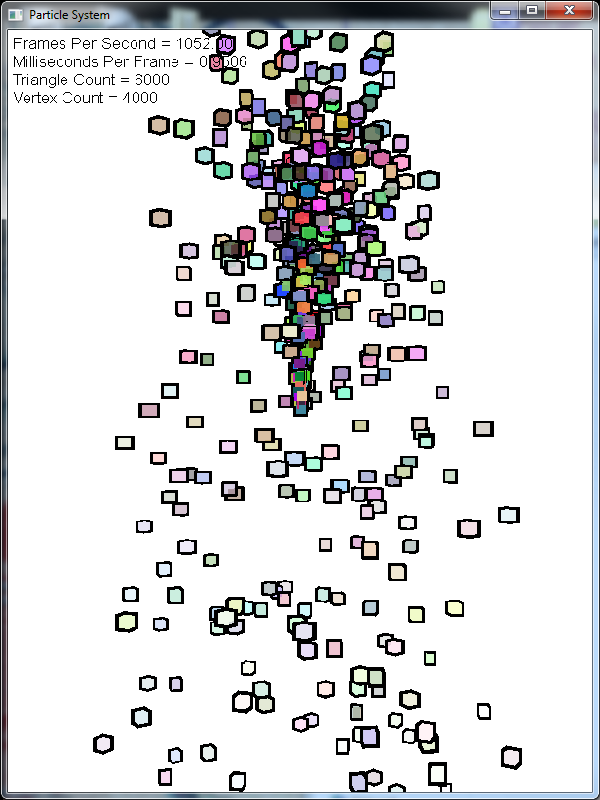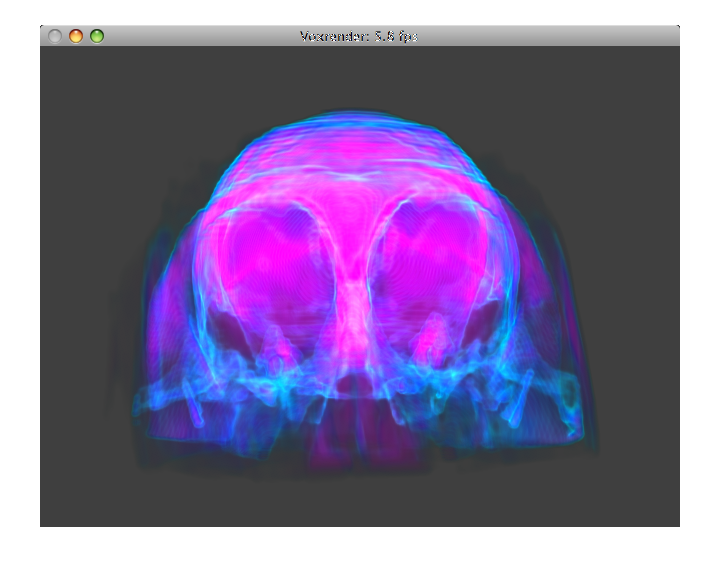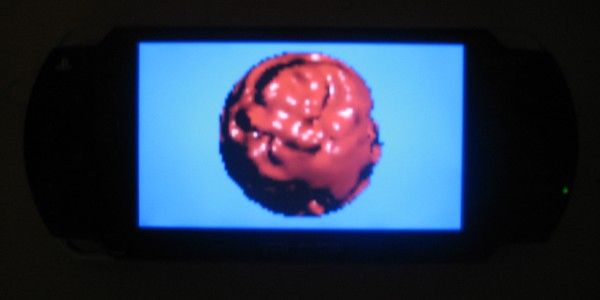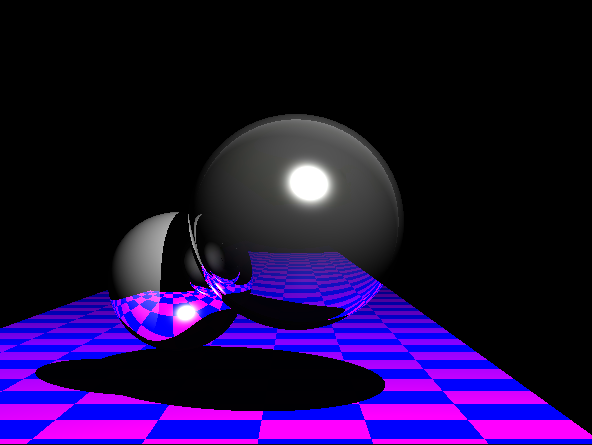I’ve recently had a need to simultaneously render using both DirectX and OpenGL. With this technique it is possible to efficiently perform some rendering operations within one API for part of an image, and switch to the other API for another part of the image. It can also be used to perform all rendering in a specific API, while presenting that final render target using another API. Providing direct access to graphics memory between APIs allows efficient and optimal sharing.
[Read More]Sharing Resources Between DirectX and OpenGL
